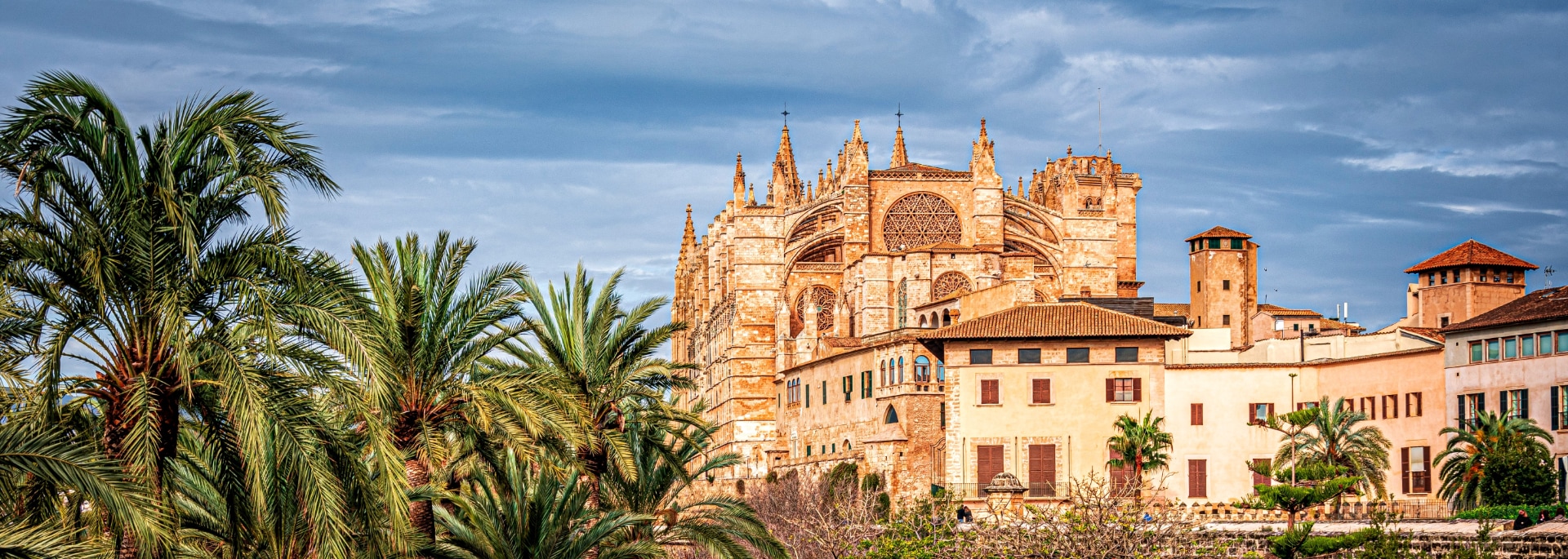
Palma is the capital and largest city of the autonomous community of the Balearic Islands. It is situated on the south coast of Mallorca on the Bay of Palma.
Since the advent of mass tourism in the 1950s, the city has been transformed into a tourist destination and has attracted many workers from mainland Spain. This has contributed to a huge change in the city’s traditions, its language, and its economic power.
The boom in tourism has caused Palma to grow significantly. In 1960, Mallorca received 500,000 visitors, in 1997 it received more than 6,739,700. In 2001 more than 19,200,000 people passed through Son Sant Joan airport near Palma, with an additional 1.5 million coming by sea. More than half of the population works in tourism, approximately 80%, therefore being the main economic portal of Palma. Tourism has affected the rapid economic growth of Palma, making the island of Mallorca wealthier compared to other regions.
The second economic portal of Palma is agriculture. Main exports of Palma’s agriculture are, almonds, oranges, lemons and olives. The island is also gifted with a wide variety of natural resources, such as mines of copper, lead and marble.
By the start of 2019 the population of the city had risen to 416,065. Almost half of the total population of Mallorca lives in Palma.
Subscriu-te al nostre butlletí mensual per rebre totes les notícies.

Nam porttitor blandit accumsan. Ut vel dictum sem, a pretium dui. In malesuada enim in dolor euismod
Nam porttitor blandit accumsan. Ut vel dictum sem, a pretium dui. In malesuada enim in dolor euismod

Nam porttitor blandit accumsan. Ut vel dictum sem, a pretium dui. In malesuada enim in dolor euismod

Nam porttitor blandit accumsan. Ut vel dictum sem, a pretium dui. In malesuada enim in dolor euismod
Nam porttitor blandit accumsan. Ut vel dictum sem, a pretium dui. In malesuada enim in dolor euismod

Nam porttitor blandit accumsan. Ut vel dictum sem, a pretium dui. In malesuada enim in dolor euismod

Nam porttitor blandit accumsan. Ut vel dictum sem, a pretium dui. In malesuada enim in dolor euismod
Nam porttitor blandit accumsan. Ut vel dictum sem, a pretium dui. In malesuada enim in dolor euismod

Nam porttitor blandit accumsan. Ut vel dictum sem, a pretium dui. In malesuada enim in dolor euismod

Nam porttitor blandit accumsan. Ut vel dictum sem, a pretium dui. In malesuada enim in dolor euismod
Nam porttitor blandit accumsan. Ut vel dictum sem, a pretium dui. In malesuada enim in dolor euismod

Nam porttitor blandit accumsan. Ut vel dictum sem, a pretium dui. In malesuada enim in dolor euismod
| Galeta | Durada | Descripció |
|---|---|---|
| cookielawinfo-checbox-analytics | 11 months | Aquesta galeta l'estableix el connector de consentiment de galetes de GDPR. La cookie s'utilitza per emmagatzemar el consentiment de l'usuari per a les cookies de la categoria "Analítica". |
| cookielawinfo-checbox-functional | 11 months | La cookie s'estableix pel consentiment de la cookie GDPR per registrar el consentiment de l'usuari per a les cookies a la categoria "Funcionals". |
| cookielawinfo-checbox-others | 11 months | Aquesta galeta l'estableix el connector de consentiment de galetes de GDPR. La cookie s'utilitza per emmagatzemar el consentiment de l'usuari per a les cookies de la categoria "Altres. |
| cookielawinfo-checkbox-necessary | 11 months | Aquesta galeta l'estableix el connector de consentiment de galetes de GDPR. Les cookies s'utilitzen per emmagatzemar el consentiment de l'usuari per a les cookies de la categoria "Necessàries". |
| cookielawinfo-checkbox-performance | 11 months | Aquesta galeta l'estableix el connector de consentiment de galetes de GDPR. La cookie s'utilitza per emmagatzemar el consentiment de l'usuari per a les cookies de la categoria "Rendiment". |
| viewed_cookie_policy | 11 months | La galeta la configura el connector de consentiment de galetes GDPR i s'utilitza per emmagatzemar si l'usuari ha consentit o no l'ús de galetes. No emmagatzema cap dada personal. |